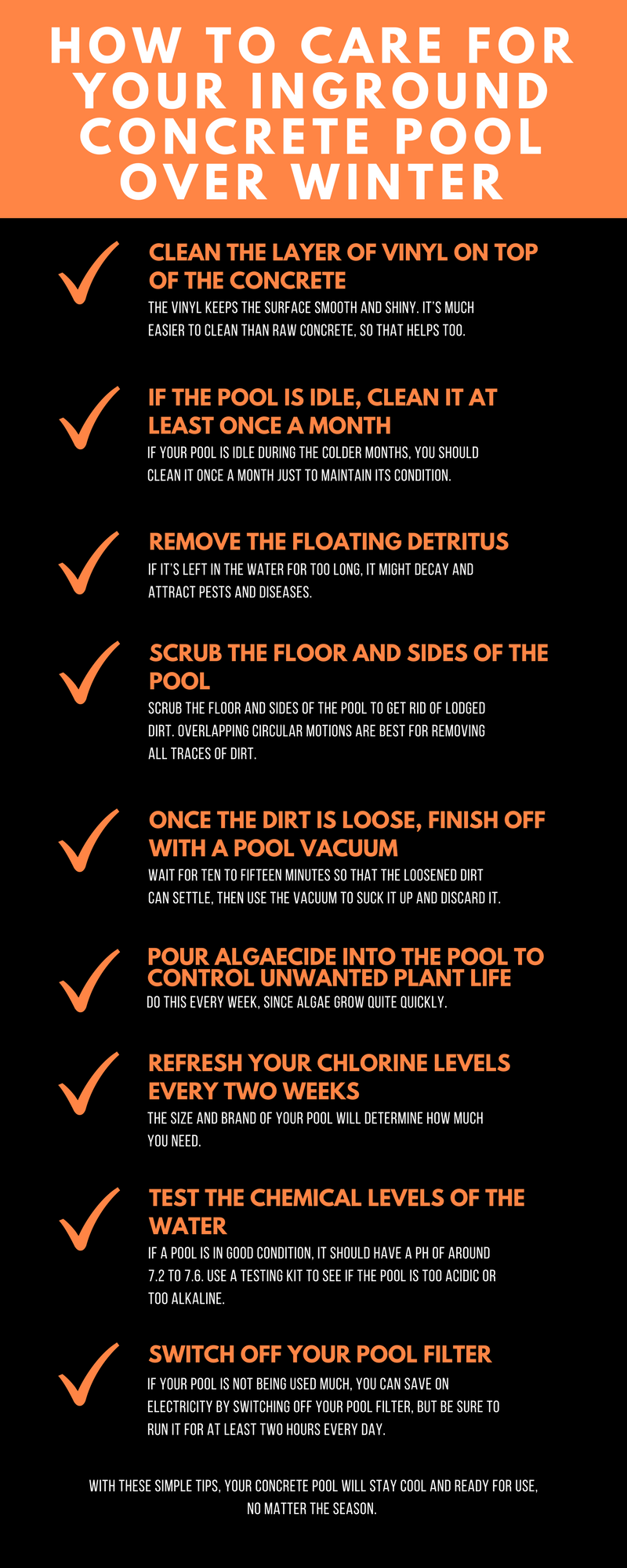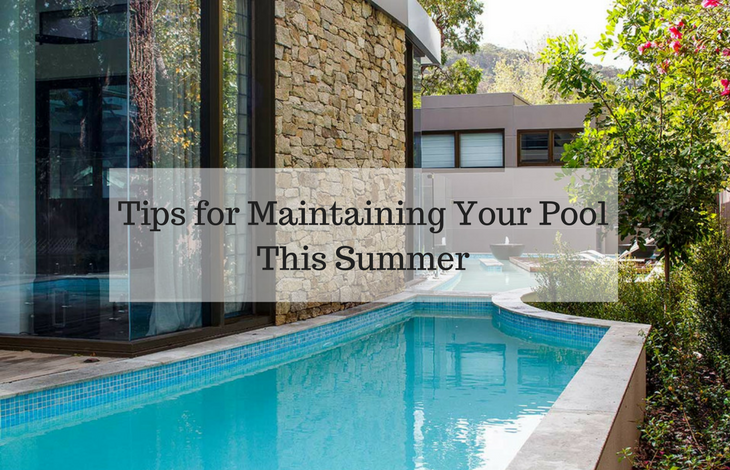Here in Australia, winter isn’t as miserable as it is in other parts of the world. For us, it just means a little extra rain and humidity, and maybe lower temperatures than normal. Since we don’t have snow to contend with, it’s not necessary to seal your pool during winter. Still, you probably won’t use it as much as you do in the summer.
You might feel that since the pool isn’t being used, there’s no reason to clean it. That’s not the best idea, since neglecting your pool can damage it, and it will cost a lot to repair it once you’re ready to swim again. To avoid unnecessary expenses, create a maintenance plan for your concrete pool.
If you already have a concrete pool, then you know it’s not as utilitarian as it sounds. Yes, the pool has a concrete floor and walls, but it also has a layer of vinyl on top of the concrete. The vinyl keeps the surface smooth and shiny. It’s much easier to clean than raw concrete, so that helps too.
If your pool is idle during the colder months, you should clean it once a month just to maintain its condition. Use a basic skimmer net to manually remove any leaves, branches, or visible debris. If you have a leafy yard, you may need to skim every day, since the dirt will accumulate much faster.
It’s important to remove the floating detritus because if it’s left in the water for too long, it might decay and attract pests and diseases. The leaves can also clog the filter if left unattended, so be sure to clear them out frequently. If you don’t want to have to do that, consider installing a pool cover to keep the dead leaves out.
Concrete pools have a different surface than tile pools, so a pool vacuum on its own may not be as effective when it comes to cleaning the floor and sides. Instead, use a pool brush with plastic bristles. Scrub the floor and sides of the pool to get rid of lodged dirt. Overlapping circular motions are best for removing all traces of dirt.
Ideally, you should scrub the pool every week when it’s idle. You can do it more frequently during summer months when the pool is in use. Once you have scrubbed the dirt, it may loosen and swirl around in the water. Now that the dirt is loose, you can finish off with a pool vacuum.
Wait for ten to fifteen minutes so that the loosened dirt can settle, then use the vacuum to suck it up and discard it. Unlike the scrubbing motion, vacuuming should be done in straight rows or columns. Keep a slow pace so that you don’t swirl the dirt back into the water.
That takes care of the wall and sides. By now, the pool should look clear and its surfaces should be gleaming. Now you need to focus on the water itself. Since it stays largely undisturbed, the pool water may look quite attractive to algae and water creatures. Pour some algaecide into the pool to control unwanted plant life. Do this every week, since algae grow quite quickly.
As for animal life, chlorine can help in making the water unattractive to them. Refresh your chlorine levels every two weeks by pouring chlorine along the sides of the pool. The size and brand of your pool will determine how much you need. Incidentally, if you feel the unusual urge for a winter swim, make sure you wait two hours or more before diving in. This gives the chlorine time to dilute and circulate, since concentrated chlorine can be harmful to your skin and respiratory system.
It also helps to test the chemical levels of the water. If a pool is in good condition, it should have a pH of around 7.2 to 7.6. Use a testing kit to see if the pool is too acidic or too alkaline, then adjust the levels so that the pool goes back to the optimum pH range. You should also clean the skimmer baskets and other filter traps.
If your pool is not being used much, you can save on electricity by switching off your pool filter, but be sure to run it for at least two hours every day. This will keep the water from getting stagnant and attracting harmful micro-organisms. If the pool is in use, run the filter for eight or so hours per day. With these simple tips, your concrete pool will stay cool and ready for use, no matter the season.




